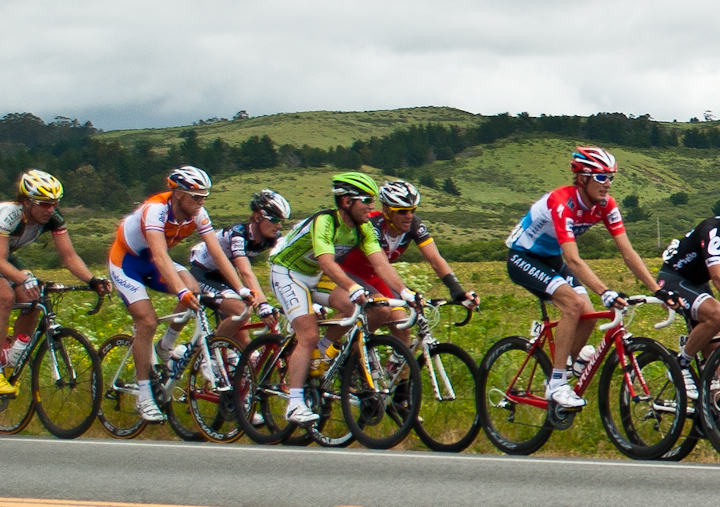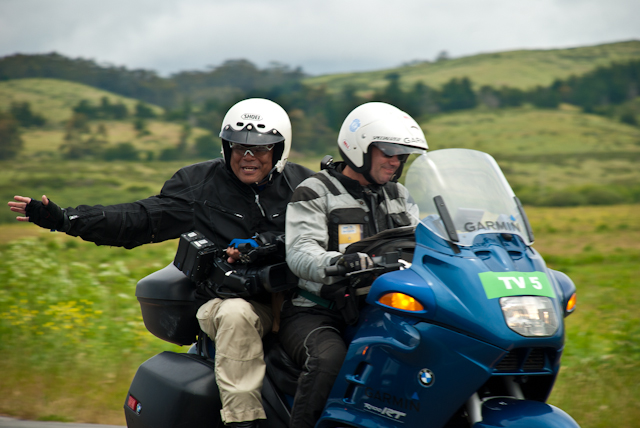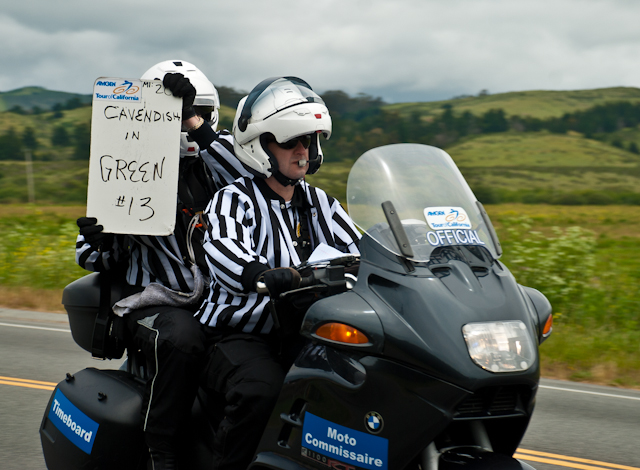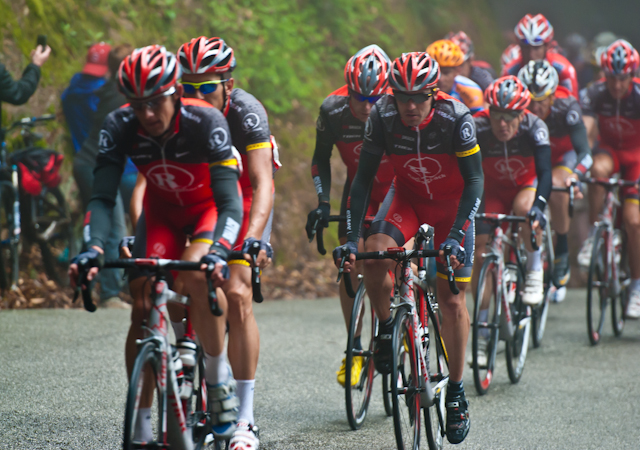Do you know what this is a picture of? Say if you know but don't reveal the answer. I'll post more pictures over the weekend and give the answer on Monday. Click the picture for a larger view.
Thursday, August 12, 2010
Monday, August 9, 2010
Answer - Friday Foto Quiz
Bodie State Park, CA, is a gold mining town gone ghost. It is isolated enough that the few people that never left were able to maintain the town in a state of arressted decay and it is now a state park. Wander around the buildings and look in the windows to see things as they were left when abandoned. This is not a staged reenactment but a snapshot of life as it was. Just 13 miles east of 395 near Mono Lake, (the last 3 miles are dirt), this is a great place for history buffs and photographer's alike. Make a day of it, bring water, a hat and plan on walking/exploring a lot. http://en.wikipedia.org/wiki/Bodie,_California
Friday, August 6, 2010
Friday Foto Quiz
Do you know where this town is?
Please do not say the answer but feel free to comment if you do know. I will reveal the location on Monday. Click the pictures for a larger view.
Please do not say the answer but feel free to comment if you do know. I will reveal the location on Monday. Click the pictures for a larger view.
Monday, August 2, 2010
Answer - Friday Foto Quiz
As Ken Burns puts it, National Parks are America's best idea. This underground National Park is Carlsbad Caverns, located in New Mexico. I believe the formation is named "Giant Dome" and resides in the Hall of Giants.
We visited the caverns in July of 2007. I had just bought a Nikon D80 and was learning to use a DSLR. the low lighting of a cave was the challenge. We had not yet envisioned our light drawing project. I was confused as to why a white LED flashlight made the formations appear blue. I've learned alot about LEDs and white balance since then.
This is a great place to visit. The scale of these formations is lost by not including people in my pictures as a reference. Plan to spend several days here to get the full experience. The main self guided tour is mind blowing. Then sign up for guided tours to lower levels and other nearby caves. The history of those that found and explored the cave is fascinating. Stay for the nightly show as 400,000 bats fly over your head as they leave the cave entrance. Then go take the main room tour again because you missed most of what is to be seen. Here is the link: http://www.nps.gov/cave/index.htm.
We visited the caverns in July of 2007. I had just bought a Nikon D80 and was learning to use a DSLR. the low lighting of a cave was the challenge. We had not yet envisioned our light drawing project. I was confused as to why a white LED flashlight made the formations appear blue. I've learned alot about LEDs and white balance since then.
This is a great place to visit. The scale of these formations is lost by not including people in my pictures as a reference. Plan to spend several days here to get the full experience. The main self guided tour is mind blowing. Then sign up for guided tours to lower levels and other nearby caves. The history of those that found and explored the cave is fascinating. Stay for the nightly show as 400,000 bats fly over your head as they leave the cave entrance. Then go take the main room tour again because you missed most of what is to be seen. Here is the link: http://www.nps.gov/cave/index.htm.
Friday, July 30, 2010
Friday Photo Quiz
I've been posting these on Facebook and despite their loose permissions policy, you still cannot view my profile unless you are a member, so...
Every Friday I will post a picture here that I've taken in my travels and ask you to identify something about it.

This week we go underground. Do you recognize this formation and where it is? Please do not give the answer but feel free to leave a comment that you do know. I'll post the answer on Sunday.
Every Friday I will post a picture here that I've taken in my travels and ask you to identify something about it.

This week we go underground. Do you recognize this formation and where it is? Please do not give the answer but feel free to leave a comment that you do know. I'll post the answer on Sunday.
Friday, July 9, 2010
Tour de France is more then a bike race
I look at photographs with 3 things in mind - education, inspiration and entertainment. This extends far beyond still photography to include movies, TV and sports coverage. I find the Tour de France bike race to be one of the most amazing visual experiences on TV providing a full serving of everything I look for.
The Tour is a 21 day dynamic challenge for any photographer and the coverage provided by the Versus cable network is first class. These photographers and videographers ride along with the 197 racers over the streets of France on the back of motorcycles and hanging out of helicopters without getting in the way. There is no stopping the race to accommodate for advertisers. Accidents happen, and lenses snap from their camera bodies.
Yet, these people persevere to bring you street level views of the rider's faces, from their eyes to their injuries and of the high tech bikes they ride. You see and experience, close-up, all the skill, concentration and emotion that is the sport. Ever changing lighting, from bright sunlight to full downpour rain and every shadow in between test their exposure and focusing skills. Shooting moving targets while you twist backwards on a motorcycle make creating good composition an amazing feat.
Dodging spectators adds to the danger, but they are also interesting subjects and are included in the coverage. You must see the costumes and enthusiasm of these fans to believe it. Don't forget the support teams. Cameras and microphones are installed to monitor team strategies. It is amazing to watch these small cars, covered in bike parts run the gauntlet of people crowding the narrow roads, bikes and motorcycles winding between them.
And, you get a free tour of France, amazingly photographed. While the motorized camera people show us the cobblestones, the local houses and gardens of the small towns and big cities of France, the helicopters give us grandiose views of medieval castles, cathedrals and estates. There are endless miles of sunflower filled farmland, green forests and vistas from the highest Alps. The Versus camera crews always find a way to include the peleton as a focal point in the composition whenever possible.
The race started July 3 and runs until July 26. Every day includes between 3 to 5 hours video of race coverage, interviews and technical analysis. The picture quality has improved greatly over the past few years and is now broadcast in HD. This TV event is not just coverage of a sport but also a colorful, undulating visual feast for the eyes.
Check your local listings (it feels funny to write that) and visit http://www.versus.com/ for more information.
The Tour is a 21 day dynamic challenge for any photographer and the coverage provided by the Versus cable network is first class. These photographers and videographers ride along with the 197 racers over the streets of France on the back of motorcycles and hanging out of helicopters without getting in the way. There is no stopping the race to accommodate for advertisers. Accidents happen, and lenses snap from their camera bodies.
Yet, these people persevere to bring you street level views of the rider's faces, from their eyes to their injuries and of the high tech bikes they ride. You see and experience, close-up, all the skill, concentration and emotion that is the sport. Ever changing lighting, from bright sunlight to full downpour rain and every shadow in between test their exposure and focusing skills. Shooting moving targets while you twist backwards on a motorcycle make creating good composition an amazing feat.
Dodging spectators adds to the danger, but they are also interesting subjects and are included in the coverage. You must see the costumes and enthusiasm of these fans to believe it. Don't forget the support teams. Cameras and microphones are installed to monitor team strategies. It is amazing to watch these small cars, covered in bike parts run the gauntlet of people crowding the narrow roads, bikes and motorcycles winding between them.
And, you get a free tour of France, amazingly photographed. While the motorized camera people show us the cobblestones, the local houses and gardens of the small towns and big cities of France, the helicopters give us grandiose views of medieval castles, cathedrals and estates. There are endless miles of sunflower filled farmland, green forests and vistas from the highest Alps. The Versus camera crews always find a way to include the peleton as a focal point in the composition whenever possible.
The race started July 3 and runs until July 26. Every day includes between 3 to 5 hours video of race coverage, interviews and technical analysis. The picture quality has improved greatly over the past few years and is now broadcast in HD. This TV event is not just coverage of a sport but also a colorful, undulating visual feast for the eyes.
Check your local listings (it feels funny to write that) and visit http://www.versus.com/ for more information.
Wednesday, May 19, 2010
Shooting the Tour of California
Mark Cavendish in green riding along side Lance Armstrong
The first thing to think about is if you want a particular angle on the riders or a certain background, getting both is difficult. You scout your area days in advance and you run into other photographers doing the same.
The peleton passes by the historic Johnston House
Then you must consider road closures. The police and the peleton are most unpredictable. The best bet is to get there early and bring some food and a chair.
Research the race and riders. Know their colors. It helps if you can follow the race on your smart phone as they approach. Is there a break-away group? Is there a sprint or feeding station nearby. All these factors may affect if you want a fierce racing shot or one of everyone sitting up, eating and throwing half empty water bottles at you. Then again, they may not.
Unless you photograph bikers every weekend, there is no time to practice. If you are smart, you practice by shooting all the support vehicles, press motorcycles and police that go by before the riders. That is not a bad idea because, no sooner that you see the riders approaching, they are on top of you and then they are gone.
Access helps you get the shot
Keep both eyes open so as not to miss anything, trip over someone else, get in the way or be hit by a vehicle.
Scouting the route, I decided to show something of Half Moon Bay and also try for a shot on the Tunitas Creek hill climb. I tried to get the riders with the green hills and the historic Johnston house in the background and was successful. Are they in focus? Not very. A faster camera would help.
I then jumped in my car and drove up to Woodside where Tunitas Creek crosses Skyline drive hoping to park, walk down the hill and get a shot of each rider's faces showing the pain of the climb.
I was lucky to get a non-muddy parking spot about a half mile from the intersection. The top of this mountain was in the clouds. Water dripped from the trees and down my back as I protected my camera under my coat. A thousand people crowded the intersection, many shivering in biking attire. Bicycles covered every bit of ground that wasn't occupied by spectators. As I approach, the Amgen van drives through saying the riders are one mile away. Holy Moly, I wanted to hike down the road a mile or 2 to get my shots.
I squeezed through to the middle of the street and hightailed it down hill, dodging police on motorcyles and speeding support cars loaded with spare bikes. I found a break in the redwood trees that let in a little bit of light through the fog and took my place along side a dozen other photographers looking for the same shot, and just in time. Balancing on a small mound, a steep slide of mud on one side and the road on the other, I squeezed off a few blurry shots between the other photographers as the peleton roared by.
Lance (second from left) with the peleton out of the fog on Tunitas Creek road. A fellow photographer on the right
That Tunitas Creek climb was nothing for these stellar atheletes. Here, I'm thinking about the Pyrenees in France and how it tests the Tour de France riders. They should be spread out, struggling up the hill, moving relatively slow with pained concentration on their face. Think again.
I scored a few pictures and learned a few lessons. All is good. Maybe, the climb out of San Jose to Modesto will give me those shots I want. Or staking out a corner at a time trial would provide some great opportunities. Those vantage points were more of a commitment than I had time for this year.
Team Radio Shack on Tunitas Creek road
Subscribe to:
Posts (Atom)



















